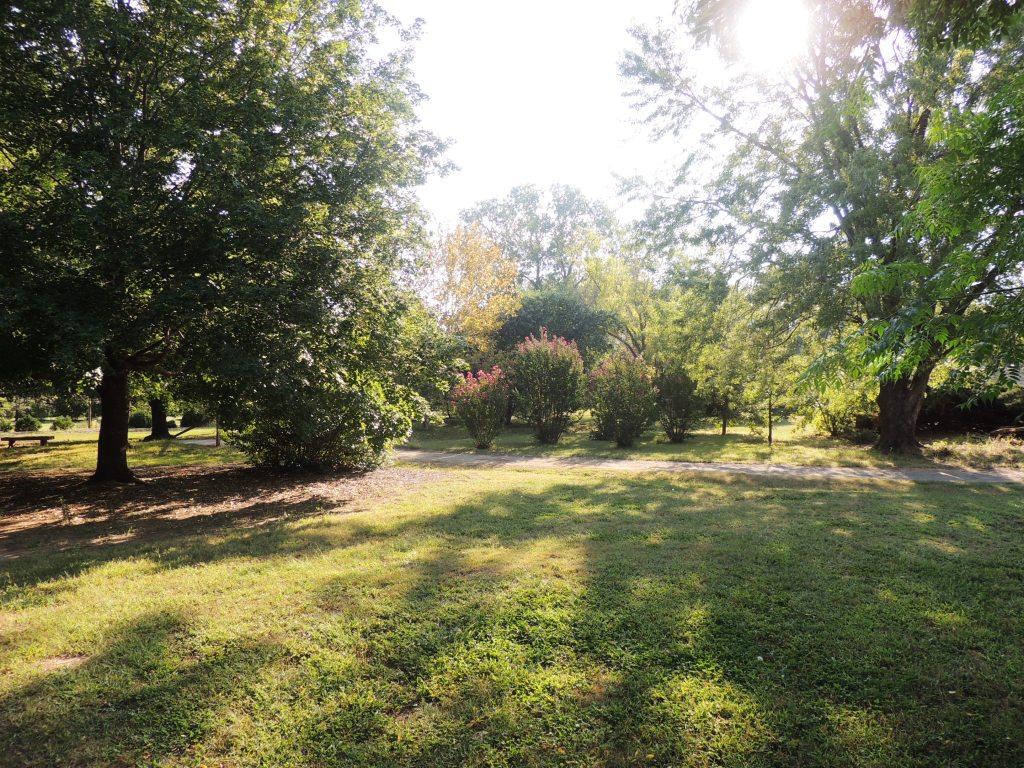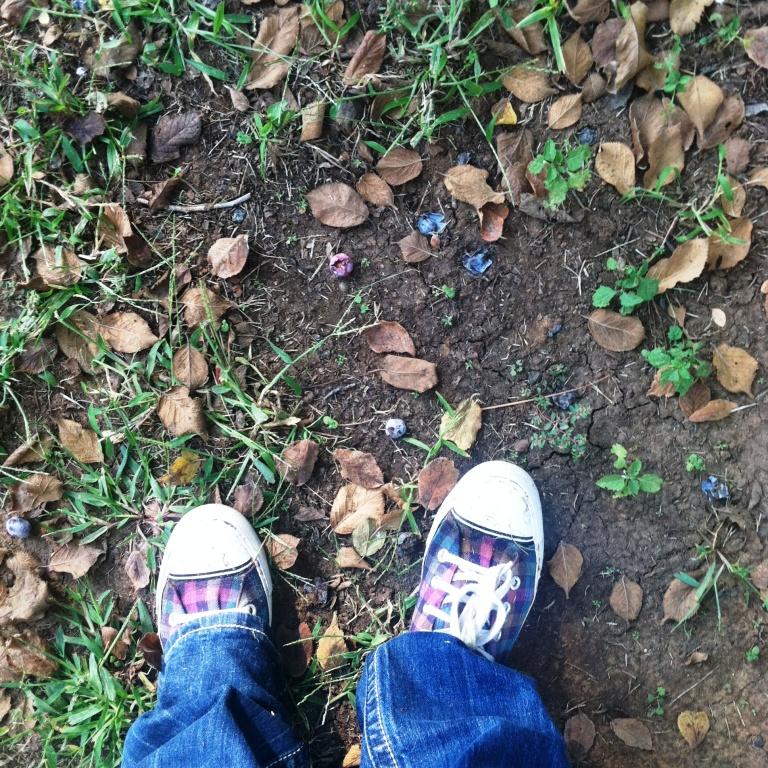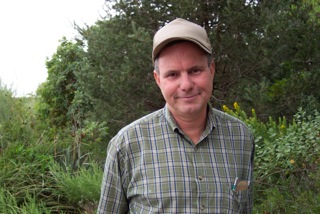This Tuesday at Master Gardener class we enjoyed a really wonderful speaker. Steve Biebrich, owner and operator of Sunshine Nurseries near Clinton, Oklahoma, came to talk to us about tree selection and propagation. Fun!
He must have shown us more than three hundred beautiful photo slides, narrating in detail all the while, and I was scribbling fast to keep up with his comments. By the end of the day my binder held a couple dozen pages of notes on tree varieties suitable for Oklahoma, their provenance, stories behind their common names (I love this kind of trivia), and much more. It was so inspiring, not to mention flat out entertaining. Steve was hilarious! Irreverent, casual, passionate about his craft. Listening to him talk trees was a total pleasure.

Steve started learning about horticulture and ecology in the tenth grade and soon after was working for his future father-in-law in a local Oklahoma landscaping business. Fast forward through his long and fruitful career, one of the many qualities that sets him apart from other nursery growers is that he has made deliberate horticultural connections between Oklahoma and China. Our climates and growing conditions are so similar that the native plants in both places are widely interchangeable. Steve and some of his colleagues from Virginia, together with the USDA, form a delegation every year and travel to China to hunt and explore, commiserate with fellow horticulturists, and bring home new and exciting seeds. In turn, they host the Chinese delegation here in our beautiful state. For forty years it’s been a fascinating exchange, especially because Steve doesn’t speak Chinese except to count to three. (But he can do a pretty funny, if nervously politically incorrect, impersonation. He’s allowed because the impersonation is of one of his Chinese friends.)
Relaying to you all the glorious information from Tuesday’s lecture would be impractical. I would definitely botch the Latin, anyway. Instead, how about a handful of quick, simple things you might like to know, whether you live in Oklahoma, China, or some other beautiful corner of this Eden of a planet? Okay.
Nature Knows Best.
Besides being college educated in horticulture, Steve’s expertise in propagation is made full by experience and keen observation. He has made it a practice to closely watch natural cycles then imitate them to achieve the best success with germination, rooting, and plant longevity. He seeks out suitable environments and conditions to make that plant happy, rather than dramatically manipulating the environment to please his appetite. He talked about asking himself, “How does this plant grow in nature?” I love this philosophy!
It’s seducing when people grow exotics and tropicals, for example, but I really groove it to make the very most of natives. A wealth of beauty and learning is available to us just by watching nature. This is deeply thrilling to me.
Patience is a Virtue.
Haven’t we all made the mistake of planting a tree or shrub too close to the house, or too near each other, or too big for a garden vacancy? Yes. We all buy too many plants for too small a space because we want impact, like, yesterday. We want a full shade tree to grace the back yard of a newly built home, and we want it this season. But not too big, right?
Well, as a grower for both homeowners and developers, Steve has seen his share of over zealous gardeners. He talked about proper tree selection, keeping the long view, and being patient. He also gave us several examples of trees that are uniquely gorgeous when full grown but look miserable and puny in a gallon bucket at the nursery. I am definitely guilty of shopping too much for today and not enough for ten years from now, so his reprimand was welcome. Two trees in particular that are now on my long-term radar? Kentucky Coffee Tree (Gymnocladus dioicus) and Cork Bark Elm (Ulmus parvifolia v. corticosa).

Drought is a Real Problem.
What more can I say that you don’t already know? Oklahomans are painfully familiar with the wide reaching effects of all sorts of extreme weather, including drought, but listening to the perspective of a professional grower was sobering. More than once Steve made wistful mention of how things were, “back when it rained.” So sad. Of course, we are all hoping that our home state is now on the upswing with steady precipitation, but only time will tell. Here at the Lazy W we are so grateful to have enjoyed a wet, mild summer, and we are hoping our neighbors to the west get deep drinks soon.
Beware Frilly Landscaping Beneath Trees
Flower beds curving around and beneath big shade trees are so beautiful, aren’t they? We all have probably tried it more than once, with varying success. Steve points out that while it may work for a few seasons and give you the fluff and color your eyes crave, that kind of soil disturbance can in the long run be harmful to some trees. Ironically, the varieties that are most suited to our extreme conditions here in Oklahoma (drought, cement-like soil, etcetera) can be most sensitive to the impatiens-and-monkey grass trend. His message was not to never plant such beds, but rather to do your homework and learn what your trees need.
My Wish List has Quadrupled
As if this weekly class hasn’t already expanded my gardening appetite to an unreasonable level, Steve’s talk on trees has made me want to grow all of them. I also now want to take walks on our farm and do some good, solid species identification. Hitherto when I haven’t known what a tree is, I’ve just called it a “blackjack.” Pathetic, I know. But now with my long list of tree varieties and specific features to learn, I feel ready. Ready to learn everything and further populate the farm with ecological beauty.
********************
Friends, thanks so much for stopping in today! I can’t ever seem to tell you everything I want to tell you about this weekly gardening class, and I can’t believe the semester is already more than halfway finished. Such a fantastic experience. It’s been a whirlwind of information, and this week’s lecture by Steve Biebrich was a high point for sure.

So tell me, what trees do you love the most? Have you ever looked to another part of the world for gardening inspiration? What is your biggest landscaping weakness?
The best time to plant a tree is 20 years ago.
~Chinese proverb (how perfect)
XOXOXOXO

I’m totally jealous that you get to go to this. 😉 So much good info. How fun!
oh Christina you would LOVE these classes! What county are you in? You should totally dive in. I am pretty sure most extension offices offer it! : )
Hello! Steve Bieberich is my father and he wanted me to tell you thank you for the wonderful article! He says he doesn’t deserve so much praise but it’s appreciated none the less! He also said you guys were a great group and he enjoyed the day. After reading this article he looked around your blog and was pleased to see you are a beekeeper as he actually used to be as well!
I understand that you identified Wichita mountain solidago. I have ordered from high country gardens twice but my plants did not survive. Can I buy plants from you – what size is required for survival of plants. I live in Brownwood, TX & would really like to have several plants.